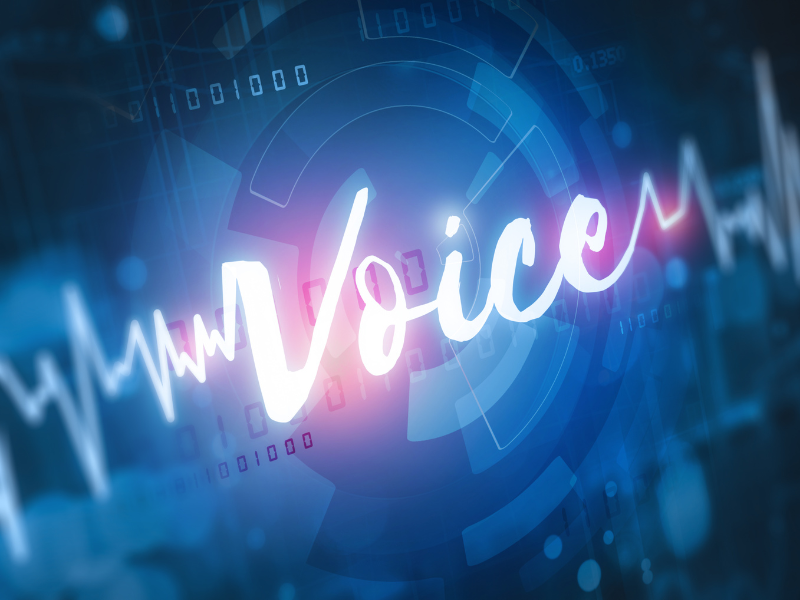Voice biometrics is quickly transforming the landscape of identity verification. By utilizing the unique patterns found in our voices—such as pitch, tone, cadence, and rhythm—voice biometrics can provide secure, seamless authentication without the need for passwords or PINs. This technology offers both unparalleled convenience for users and enhanced security for businesses across sectors, including banking, healthcare, and telecommunications.
Key Takeaways
- Voice biometrics uses unique vocal characteristics for identity verification, analyzing traits like pitch, tone, and cadence rather than the content of speech.
- This technology offers secure, user-friendly authentication solutions, reducing reliance on passwords and enhancing convenience for users.
- Voice biometrics is widely applied in security, fraud prevention, and personalized customer service across industries such as banking, healthcare, and telecommunications.
- Integrating machine learning and AI, voice biometrics continuously improves accuracy, adapting to changes in vocal patterns and diverse accents.
- Despite its many advantages, challenges like background noise, privacy concerns, and high implementation costs pose obstacles to widespread adoption.
- Advancements like real-time verification, multimodal biometrics, and improved spoofing defenses indicate a promising future for voice biometrics innovation.
As the demand for better authentication methods grows, voice biometrics is establishing itself as a critical tool for secure identity verification in the digital age. Private Identity’s voice biometrics technology leverages patented edge AI and homomorphic tokenization to process voiceprint data directly on devices, ensuring privacy and eliminating the risks of data breaches
What Is Voice Biometrics?
Voice biometrics is a form of biometric technology that identifies individuals based on their vocal characteristics. Unlike traditional systems that rely on what is being said, voice biometrics focuses on how it is said, analyzing traits such as pitch, tone, and cadence. This makes it a highly secure and unique form of authentication, much like fingerprints or retinal scans.
When a user speaks, voice biometrics systems convert vocal features into a unique voiceprint. This voiceprint is used to verify the user’s identity, ensuring that only authorized individuals can access sensitive data or perform secure transactions.
This technology enhances security by providing a non-intrusive, user-friendly authentication process. Whether accessing mobile devices, secure bank accounts, or restricted systems, voice biometrics eliminates the reliance on traditional passwords, which are prone to theft or misuse. Private Identity’s solution further improves security by operating on-device, meaning that no personal identifiable information (PII) or voiceprint data ever leaves the user’s device

How Voice Biometrics Work
Voice biometrics relies on sophisticated algorithms and machine learning to analyze vocal traits. The process involves the following:
- Voice Sample Collection: A user speaks a phrase or sentence, providing a voice sample.
- Vocal Feature Extraction: The system captures key vocal features such as pitch, tone, cadence, and rhythm.
- Voiceprint Creation: These features are digitized into a unique voiceprint.
- Pattern Matching: The system compares the recorded voiceprint to stored voiceprints in a database to verify the individual’s identity.
By utilizing advanced machine learning models, voice biometrics can continuously refine its ability to identify a speaker accurately, even as their vocal traits change over time.
Technology Behind Voice Biometrics
Voice biometrics combines signal processing and machine learning to create accurate voiceprints. Signal processing analyzes sound waves, isolates relevant features, and removes background noise to ensure the integrity of the voice sample. Machine learning then enhances the system’s ability to identify and verify voices by adapting to variations in tone, accent, and even emotional state.
Private Identity’s patented technology utilizes edge AI to analyze these vocal patterns in real-time, directly on the user’s device, reducing the risk of data leaks and ensuring compliance with global privacy laws
Neural networks are often employed to boost accuracy, allowing systems to improve over time. This makes voice biometrics incredibly effective at handling various accents, languages, and even vocal changes due to illness or aging.
Applications of Voice Biometrics
Voice biometrics is revolutionizing many industries, offering secure, fast, and convenient solutions for identity verification and fraud prevention.
1. Security and Authentication
Voice biometrics is a key player in secure authentication systems. It can replace traditional passwords for logging into devices, authorizing payments, and accessing sensitive information. This solution is particularly beneficial in industries like banking and healthcare, where security is paramount. The unique nature of each voiceprint makes it highly resistant to theft or duplication, offering an additional layer of protection.
Private Identity also enhances authentication by utilizing on-device liveness detection, ensuring that users are authenticating themselves in real-time, preventing fraud through deepfake technology or spoofing
2. Fraud Prevention
Voice biometrics is particularly effective in detecting and preventing fraud. By analyzing subtle vocal traits, it can identify potential impersonation attempts or voice spoofing. In industries such as banking and telecom, voice biometrics is used to block unauthorized access and fraudulent transactions. Advanced fraud detection systems continuously monitor for anomalies, ensuring ongoing protection.
3. Personalization in Customer Service
Voice biometrics improves customer service by enabling personalized experiences. With voiceprint recognition, customer service agents can instantly identify callers, speeding up verification and response times. This leads to a more efficient and satisfying customer experience, especially in contact centers where quick, secure identification is essential.
Advantages of Voice Biometrics
1. Convenience and Accessibility
One of the greatest advantages of voice biometrics is its ease of use. Users only need to speak naturally—no passwords or PINs are required. This simplifies the authentication process and makes it more accessible for people with disabilities or limited mobility.
2. Enhanced Security
Unlike traditional passwords, which can be easily guessed or stolen, voice biometrics offers higher security. Each person’s voiceprint is inherently unique, making it extremely difficult to replicate. Advanced systems can also detect synthetic voices or attempts at audio manipulation, adding further protection against fraud and identity theft.
Private Identity’s solution provides enhanced privacy and security by operating entirely on-device, meaning no personal data is transmitted or stored remotely
3. Integration with Modern Technologies
Voice biometrics seamlessly integrates with AI and the Internet of Things (IoT). AI-driven systems continuously improve accuracy by learning from new voice samples, adapting to changes in speech patterns. IoT devices, such as smart home assistants, are increasingly using voice biometrics for secure, personalized interactions.
Limitations and Challenges
Despite its many benefits, voice biometrics faces several challenges that could hinder its widespread adoption.
1. Accuracy and False Positives
Environmental factors, such as background noise or poor audio quality, can impact the accuracy of voice biometrics. False positives or false negatives may occur, leading to incorrect identification. Changes in a person’s voice due to illness, aging, or emotional state can also reduce accuracy.
2. Privacy Concerns
As with all biometric data, voiceprints are sensitive information. Storing or transmitting voiceprints without proper security measures can expose users to identity theft and privacy violations. Ensuring that voiceprints are encrypted and securely stored is essential to maintaining user trust and compliance with privacy laws such as GDPR or CCPA.
Private Identity addresses privacy concerns with its homomorphic tokenization technology, ensuring that voiceprint data is anonymized and securely stored without ever leaving the user’s device
3. Implementation Costs
The initial cost of implementing voice biometric systems can be high, including expenses related to software, hardware integration, and ongoing maintenance. While the benefits are substantial, businesses with limited budgets may find these costs prohibitive.
The Future of Voice Biometrics
As technology continues to advance, the future of voice biometrics looks promising. Several trends are emerging that will shape the next phase of this technology:
1. Real-Time Verification
Voice biometrics systems are now capable of real-time verification, significantly improving fraud prevention during live interactions, such as remote banking calls. This trend is particularly important for high-risk environments where instant identity verification is crucial.
2. Multimodal Biometric Systems
The combination of voice biometrics with other biometric technologies—such as facial recognition or fingerprint scanning—will provide a more robust, multi-layered approach to security. This will enhance accuracy and further reduce the chances of identity fraud.
3. Enhanced Spoofing Resistance
As deepfake technology continues to evolve, voice biometrics systems are incorporating more advanced anti-spoofing techniques, such as liveness detection and synthetic fraud recognition, to defend against increasingly sophisticated impersonation tactics.
4. Localized Language Models
Voice biometrics is adapting to diverse linguistic environments by supporting region-specific accents and dialects. This development will improve the system’s accuracy across different geographies and ensure seamless integration into global applications.
Conclusion
Voice biometrics is revolutionizing identity verification, offering a unique combination of convenience, security, and privacy. By leveraging the distinct characteristics of our voices, this technology enhances user experience while providing robust protection against identity fraud and data breaches.
As advancements in AI and machine learning continue to improve the accuracy and reliability of voice biometrics, it is set to become an integral part of secure authentication across various industries. Despite the challenges, including accuracy and privacy concerns, the future of voice biometrics remains promising, with innovative solutions such as multimodal biometrics and real-time verification driving its widespread adoption.
Frequently Asked Questions
What makes a person’s voice unique, like a fingerprint?
Each voice contains distinct features, including pitch, tone, cadence, and rhythm, which combine to form a unique “voiceprint.”
How does voice biometrics ensure secure authentication?
Voice biometrics creates a digital voiceprint based on vocal characteristics and compares it to pre-recorded voiceprints for identity verification.
Can voice biometrics recognize accents or changes in voice due to illness?
Yes, modern systems adapt to variations in voice caused by accents, illness, or aging, ensuring reliable authentication.
What industries benefit most from voice biometrics?
Industries such as finance, healthcare, banking, and telecom benefit significantly. Voice biometrics enhances security, prevents fraud, and improves customer service by enabling instant, secure, and personalized interactions.
Is voice biometrics accessible for individuals with disabilities?
Yes, it offers a hands-free solution that benefits individuals with disabilities, enabling easy authentication through speech.
What are the main limitations of voice biometrics?
Voice biometrics faces challenges like environmental noise affecting accuracy, high implementation costs, and privacy concerns regarding secure storage of sensitive voice data. These issues require careful consideration during deployment.
How does voice biometrics differ from speech recognition?
Voice biometrics identifies who is speaking, while speech recognition focuses on what is being said.
How can privacy be ensured with voiceprint data?
Organizations must use encryption, secure storage, and regulated data-sharing practices. Robust privacy measures are essential to prevent unauthorized access or misuse.
Can voice biometrics prevent identity fraud?
Yes, it helps detect fraud by identifying impersonation attempts and unusual voice patterns.
What is the future of voice biometrics?
The future includes improvements in accuracy through adaptive learning, integration with multimodal biometric systems, enhanced spoofing resistance, and better support for regional accents and dialects, driving widespread adoption across industries.
